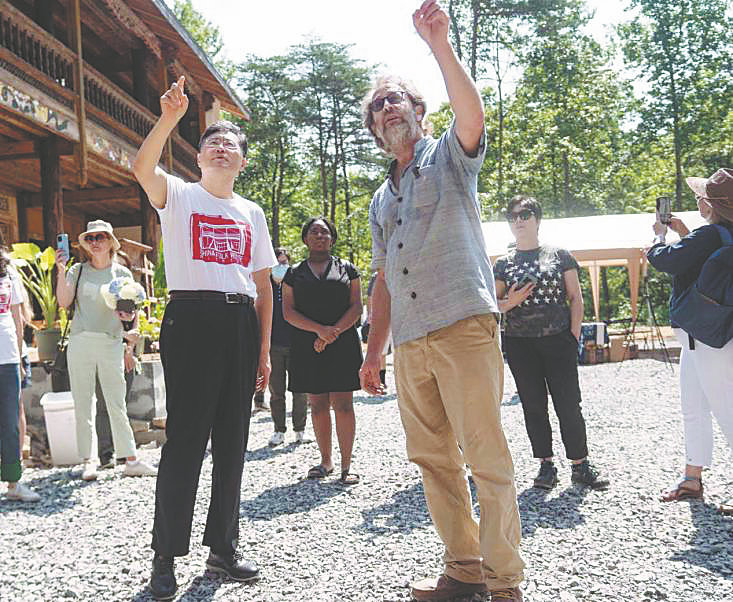'Crazy' idea highlights Chinese culture


In 2014, Flower, director of Sidwell School's Chinese studies program, led his students to travel from Xizhou to Cizhong, a hamlet along the banks of the Lancang River, which is the upper reaches of the Mekong River, in Dechen county, sitting within northwest Yunnan.
While they were passing by a lone, two-story house, its owner Zhang Jianhua opened the gate and invited Flower and his team in for tea.
Zhang told Flower that his house was built in 1989, before electricity came to light the village.
The village had a power supply, but not during inclement weather, such as storms. The government planned to build a power station on the nearby Lancang River, and a new dam meant that river waters would flood large swathes of land, including that upon which Zhang's residence stood.
By August 2018, Zhang would have had to move to a house built for him by the local government about a kilometer away.
"Your house is so beautiful. It's a shame we can't just take it apart and bring it to America," Flower remembered telling Zhang.
Zhang, of Tibetan ethnicity, had, for two winters, logged wood for the home from the mountains by himself. Some logs were so huge that each one needed to be carried by four people. He hired Bai carpenters from neighboring Jianchuan county, a place renowned for craftsmanship in homebuilding and wood carving.
With the traditional layout, carving and joinery techniques going back centuries, the house is a blend of Tibetan, Naxi, Bai and Han ethnic styles. It is not unusual, but "unusually" well built and well maintained, Flower would later recall.
Flower noted that Zhang's house, like many other traditional farmhouses are, literally, texts, because they have lots of inscriptions, symbols and meaningful ornamentation — not just "decoration" — that reinforce traditional, usually Confucian, values or hold moral meaning.
"Perhaps (the) most important way in which a house is a reference of folk ways, though, is its function as an agricultural tool," he says.
For example, Zhang's house has a cool, dark, dry room on the western side of the first floor that served as an agricultural store room, providing the ideal conditions for holding grain and fermented foods.
The open attic was used for drying and storing hay and dried vegetables to feed animals in winter; the courtyard and porch were used for processing wine and hanging meat to cure.
"Wouldn't it be cool if, instead of taking students to China to see houses, we could take a Chinese house to the students?" Flower says.
























